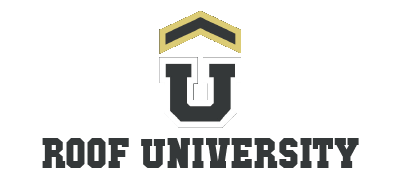Metal panel roofing is a popular choice for both residential and commercial applications due to its durability, longevity, and aesthetic versatility. Known for its strength and ability to withstand harsh weather conditions, metal panel roofs are ideal for various climates and building designs. This guide explores metal panel roofing, its types, advantages, installation methods, and maintenance tips.
What is Metal Panel Roofing?
Metal panel roofing consists of large, interlocking sheets made from materials such as steel, aluminum, copper, or zinc. These panels are designed to provide a watertight and weather-resistant barrier while adding a sleek, modern look to buildings. Metal panels are available in a wide range of styles, colors, and finishes to suit architectural preferences.
Types of Metal Panel Roofing
- Standing Seam Panels:
- Feature raised seams that interlock for a clean, contemporary appearance.
- Known for excellent water resistance and durability.
- Exposed Fastener Panels:
- Have visible screws or fasteners, offering a traditional and economical option.
- Commonly used for barns, garages, and utility buildings.
- Corrugated Panels:
- Wavy or ridged design that enhances strength and provides a rustic look.
- Lightweight and cost-effective.
- Metal Shingles or Tiles:
- Mimic the appearance of traditional shingles, slate, or tiles.
- Offer the durability of metal with a more classic aesthetic.
- Insulated Panels:
- Combine a metal outer layer with a foam core for enhanced thermal performance.
- Ideal for energy-efficient buildings.
Benefits of Metal Panel Roofing
- Longevity:
- Metal roofs can last 40 to 70 years or more with proper care.
- Durability:
- Resistant to impacts, fire, high winds, and extreme weather conditions.
- Energy Efficiency:
- Reflect sunlight to reduce cooling costs and are often ENERGY STAR® certified.
- Low Maintenance:
- Require minimal upkeep compared to traditional roofing materials.
- Eco-Friendly:
- Often made from recycled materials and fully recyclable at the end of their lifespan.
- Aesthetic Variety:
- Available in numerous colors, profiles, and finishes to match any architectural style.
Challenges of Metal Panel Roofing
- Higher Initial Cost:
- The upfront cost is higher than some other roofing materials, though offset by longevity and low maintenance.
- Noise:
- May be noisier during heavy rain or hail without proper insulation.
- Expansion and Contraction:
- Metal panels can expand or contract with temperature changes, requiring careful installation to prevent warping.
- Scratches and Dents:
- Softer metals, like aluminum, can be prone to damage from impacts.
Installation Methods
- Preparation:
- Ensure a solid and level roof deck. Add an underlayment for extra protection against moisture.
- Panel Placement:
- Start at one edge of the roof and overlap panels to create a watertight seal.
- Fastening:
- Use appropriate screws or clips, depending on the panel type (exposed or concealed fasteners).
- Sealing:
- Apply sealants at overlaps and edges to prevent water infiltration.
- Ridge and Edge Treatment:
- Install ridge caps and flashing to complete the roof and enhance weather resistance.
Maintenance Tips for Metal Panel Roofs
- Inspect Regularly:
- Check for loose fasteners, scratches, dents, or rust spots.
- Clean the Surface:
- Remove dirt, debris, and organic material to prevent staining or corrosion.
- Reapply Coatings:
- Apply protective coatings or touch-up paint as needed to maintain the finish.
- Address Damage Promptly:
- Repair or replace damaged panels to prevent leaks or structural issues.
- Ensure Proper Ventilation:
- Maintain roof ventilation to reduce moisture buildup and prolong roof life.
Applications of Metal Panel Roofing
- Residential Homes:
- Suitable for modern, rustic, or traditional architectural styles.
- Commercial Buildings:
- Common for offices, retail spaces, and warehouses due to durability and energy efficiency.
- Industrial Facilities:
- Used for factories and storage units where strength and low maintenance are critical.
- Agricultural Structures:
- Ideal for barns, silos, and equipment sheds due to their cost-effectiveness and weather resistance.
Why Choose Metal Panel Roofing?
Metal panel roofing offers a combination of style, strength, and sustainability. Its long lifespan, low maintenance, and energy efficiency make it an excellent investment for homeowners and businesses alike. Whether you’re building a modern home or upgrading a commercial property, metal panels provide reliable protection and aesthetic appeal.
Conclusion
Metal panel roofing is a versatile and durable solution for various roofing needs. With options ranging from sleek standing seams to rustic corrugated panels, it suits any design preference while delivering outstanding performance. Proper installation and maintenance ensure this roofing system provides decades of reliable service and protection.
